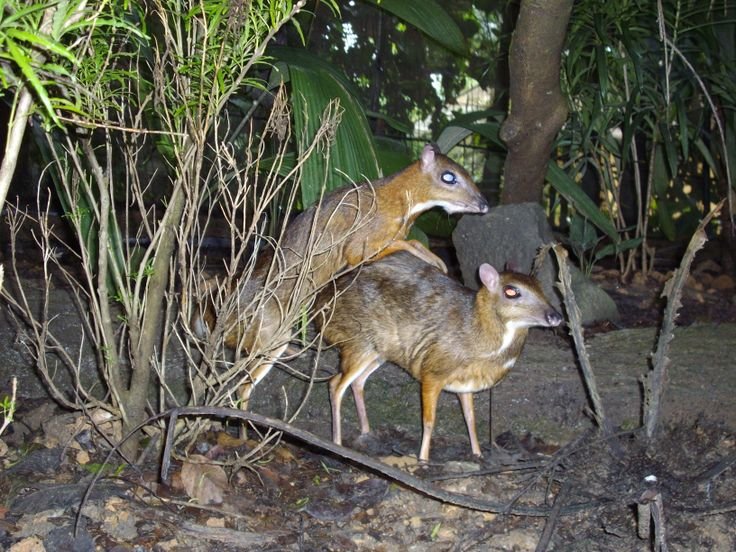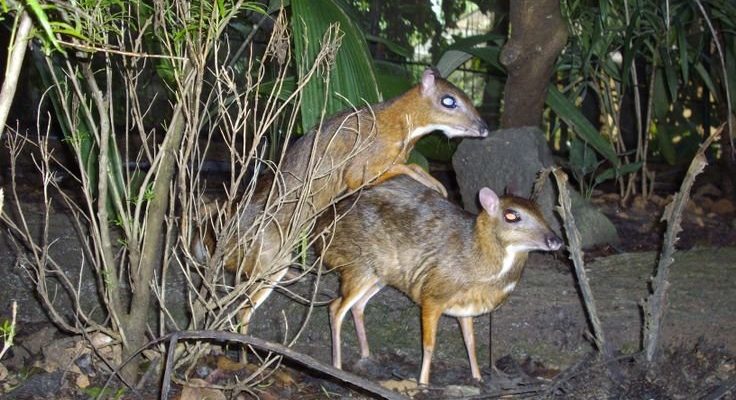
Mouse deers are part of the Tragulidae family, which includes species like the Indian mouse deer and the lesser mouse deer. Found across Southeast Asia, these critters have unique parenting styles that make them particularly interesting. Just like how different cultures approach family life differently, mouse deers have their own ways of nurturing their young that are tailored to their environments. So, grab a cup of coffee, sit back, and let’s dive into how these adorable little mammals bring up their kids in the wild!
Understanding Mouse Deers
Mouse deers, also known as *tragulids*, are the smallest members of the deer family. Adorably compact, some species weigh as little as 10 pounds! They have slender legs, elongated bodies, and a distinctively small stature, resembling a mix between a deer and a mouse—hence the name. These creatures are typically nocturnal, which means they’re mostly active at night.
Living in dense forests and underbrush, mouse deers rely on their camouflage to protect themselves from predators. Despite their small size, they’ve adapted remarkably well to their habitats. You might be wondering why these attributes matter in terms of parenting. Well, being discreet is crucial for raising young in a setting where larger animals can pose a significant threat.
Mouse deers primarily eat leaves, fruits, and fallen seeds, which means they have to constantly forage for food. This foraging behavior doesn’t just assist their survival; it’s also essential for their calves. Young mouse deers need to learn what’s safe to eat as they grow, and their mother’s diet serves as the perfect teaching tool.
Breeding Habits
Now, let’s talk about how mouse deers find their partners. Mouse deers are generally solitary creatures, but they come together to mate. Their breeding season can vary depending on the species and the region, but it typically happens during the rainy season when food is plentiful. Think of it like a dinner party—everyone gathers when there’s enough food to go around!
Once they mate, the female mouse deer has a gestation period of about 7 months. That might not seem like long compared to some other animals, but it’s a significant time considering their small size. Just before giving birth, a mother will scout out a safe and hidden spot, like dense foliage, to deliver her young. This choice helps keep her calves safe from prying eyes.
After giving birth, a mouse deer will often stay with her calf for a while, nurturing and protecting it. This time is crucial as the mother teaches the young deer how to navigate their surroundings safely. Placing their trust in the thick brush helps create a more secure environment for the young ones to grow.
Calf Development and Nurturing
Once a mouse deer calf is born, its needs are very specific. These calves are born with spots, which provide excellent camouflage among the forest floor. For the first few weeks, they remain hidden and quiet to avoid detection. Can you imagine being a tiny creature trying to become invisible? That’s life for a mouse deer calf!
Mothers are very attentive and will leave their young in a safe spot while they forage for food. This is a significant aspect of their nurturing style. The calves must be quiet while the mother is away, as any loud noises could attract predators. Here’s the thing: it’s a delicate balance. The mother knows when it’s time to come back to her calf for feeding, usually just enough to keep the little one healthy without drawing too much attention.
Over time, as the calf grows, it will start to follow its mother around. This stage is vital for learning. Young mouse deers watch their mothers closely, picking up vital skills such as foraging and recognizing danger. The transition from being hidden away to actively following their mothers is a slow process that’s essential for their survival.
Social Structure and Interactions
Mouse deers aren’t particularly social animals, often preferring solitude. This solitary behavior extends to the mother-calf relationship, where the connection is very strong but brief. After a few months, calves start becoming independent. This can be a heart-wrenching time for the mother, but it’s a crucial part of life. The survival of the fittest is a real thing in the wild, and this independence prepares the young for their future.
Interestingly, mouse deers communicate through a series of sounds and body language. From subtle grunts to posturing, these interactions help maintain the delicate balance of their ecosystem. When a mother feels threatened, she may signal her calves to keep quiet and hidden, reinforcing those survival skills they’ve been learning.
As they grow, these young deers also start carving out their territories. They learn to navigate the challenges of finding mates, establishing space, and avoiding predators, all while remembering the lessons taught by their mothers. It’s like they’re growing up while still playing a game of hide and seek!
Challenges in the Wild
Life isn’t easy for mouse deers, and they face several challenges in their wild habitats. Habitat loss due to deforestation is a significant threat, as is hunting. These factors not only impact adult mouse deers but also their young. Without sufficient cover to hide in, calves become more vulnerable to predators.
The changing climate can also affect their food supply. When shifts happen in weather patterns, the plants that mouse deers rely on can disappear. This problem can lead to a cascading effect, impacting not just mouse deers but the entire ecosystem they live in, including their calves.
Additionally, competition with other herbivores can make it even harder for these creatures to find enough to eat. As they raise their young, mothers need to be aware of more than just predators. They must also navigate a landscape where food is becoming scarcer.
Mouse deers may be small and often overlooked, but their approach to raising young is both strategic and impressive. From creating safe spaces for their calves to teaching them how to thrive in the wild, these creatures embody resilience and adaptability. As you sip your coffee and reflect on the parenting styles of these unique animals, it’s clear that every aspect of their lives plays a role in shaping the next generation.
By understanding how mouse deers raise their young, we not only gain insight into their world but also appreciate the delicate balance of nature. The next time you consider animal parenting, remember these tiny deer and their extraordinary ways of bringing up their kids—it’s a wild journey indeed!

